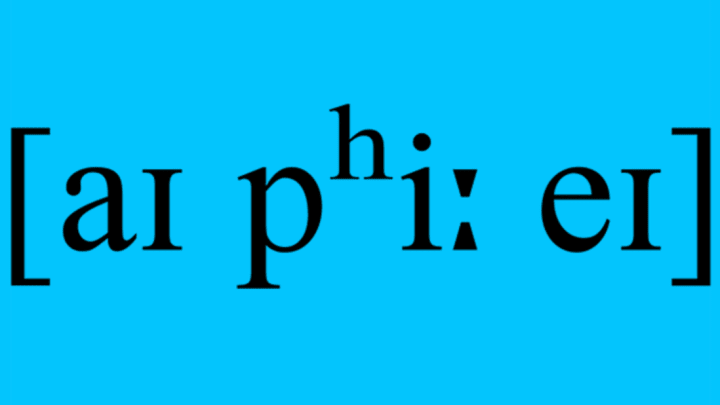Every writing system represents speech a little differently, and no system is completely faithful to how words are actually pronounced. For over a century, the International Phonetic Alphabet has tried to remedy this situation by providing a way to accurately represent the pronunciation of any spoken language. Here are 11 fun facts about the IPA.
1. ITS ORIGINAL PURPOSE WAS TO MAKE TEACHING FOREIGN LANGUAGES EASIER.
When you learn a foreign language, you're naturally drawn to pronounce the letters you see in the written form as you would in your own language. A language teacher named Paul Passy thought it would be better to start with a purely phonetic writing system in order to avoid this contamination. He founded the International Phonetic Association in Paris in 1886.
2. IT EXPANDED TO INCLUDE MORE AND MORE LANGUAGES.
The original version could handle the sounds in French, English, and German. Later revisions added symbols for pharyngeals (e.g., [ʕ], used in Arabic), retroflex consonants ([ɖ], used in Hindi), clicks ([ǂ], used in Khoisan languages), and a range of other speech sounds. Now it can handle nearly any spoken language.
3. IT GREW FROM ABOUT 40 TO ALMOST 200 SYMBOLS.
The first version of the IPA had 30 consonants and 13 vowels plus a few diacritics. There are now more than double the number of consonants and vowels, plus diacritics, tone markers, and other combining symbols that allow the potential for thousands of different sounds to be represented.
4. IT CAN REPRESENT A KISS, A RASPBERRY, OR VOCAL FRY.
Because bilabial clicks ([ʘ] a kissing sound), bilabial trills ([ʙ] blowing a raspberry, but without the tongue sticking out), and creaky voiced articulations ([a̰] “vocal fry”) show up as speech sounds in some languages, they get IPA symbols too.
5. UNTIL 1971 ARTICLES IN THE INTERNATIONAL PHONETIC ASSOCIATION’S JOURNAL WERE PUBLISHED IN IPA.
The original name of the International Phonetic Association was Dhi Fonètik Tîtcerz' Asóciécon and its journal was titled Dhi Fonètik Tîtcer. In 1889, the journal was renamed Le Maître Phonétique, but as much as possible articles were still published in the phonetic alphabet. That practice ended in 1971 when the journal was renamed the Journal of the International Phonetic Association. Above, you can see the beginning of an article in French on "Ecriture Phonétique Simplifie," or simplified phonetic writing.
6. THERE WERE SPECIAL PHONETIC SYMBOL TYPEWRITERS FOR WRITING IN IPA.
To make the task of writing in the phonetic alphabet more convenient, typewriters were modified or produced especially for this task. They could be pricey, though: Models publicized in a 1912 supplement to Le Maître Phonétique would cost $1600 and $3200 today.
7. IT’S FINE-GRAINED ENOUGH TO REPRESENT DIFFERENT ACCENTS.
You can test it out for yourself at Lingorado, where you can translate text into the IPA for British or American pronunciations and listen to the results. Compare the British (above) and American (below) versions of “Herbs and tomatoes for your vitamin laboratory.”
8. IT’S USED TO HELP SINGERS LEARN ARIAS IN OTHER LANGUAGES.
Opera singers need to learn songs in a variety of languages, and in addition to studying the notes and the music, they must become experts in the proper pronunciation of the lyrics. In order to avoid letting a mistaken interpretation of the printed words color their diction, they study IPA representations of the words as well. A huge selection of IPA versions of songs is available (for sale) at IPA Source; the aria above comes from Bizet's Carmen.
9. YOU CAN READ LITERATURE IN IPA.
There isn’t much in the way of literature written in IPA form, but you can find ˈÆlɪsɪz Ədˈventʃəz ɪn ˈWʌndəˌlænd. Or a version of Our Mutual Friend by Charles Dickens. There is also a 1914 book of jokes called English Humor in Phonetic Transcript that makes for a fun way to practice your IPA skills.
10. USING IT MAKES YOU NOTICE LINGUISTIC FACTS OBSCURED BY WRITING SYSTEMS.
What sound does the letter sequence 'th' represent? Two sounds that are as different as 'p' and 'b.' In IPA they get two symbols: [θ] for the voiceless sound in breath and [ð] for the voiced sound in breathe. Is there an 'n' sound in thing? Not really. When you say this word, the tip of your tongue never touches the ridge behind your teeth as an 'n' usually does. Instead, the back of your tongue meets your velum to make a velar nasal, symbolized as [ŋ]. Why does the same word no sound so different in English and Spanish? Because Spanish uses a pure mid back rounded vowel [o], while (American) English uses a diphthong [oʊ].
11. IT MAKES FOR A COOL TATTOO
Image courtesy of Steve Kleinedler. Design by Kyle Nelson of Stoltze Design and art by Mike Helz of Stingray Body Art.
The vowels of the IPA aren't just a collection of symbols—they're also arranged into a chart where the position of the symbol roughly corresponds to the position of the tongue in the mouth when producing that vowel. It's not just a key, but an interesting visual display. Steve Kleinedler, Executive Editor at American Heritage Dictionary, has the full IPA vowel chart tattooed on his back.
